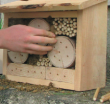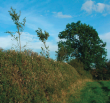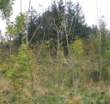Farmland Habitats
Aquatic | Hedgerows | Farmyard | Crops for Wildlife | Linear Habitats
The Irish landscape with its associated biodiversity has been shaped by millennia of agricultural activity, with nature providing the raw material. Irish farmland is characterised by having a good diversity of habitats such as hedgerows, field margins, ponds and streams, native woodland, bogs and species-rich meadows and pastures. Irish biodiversity therefore depends on farmland habitats.
The most common farmland habitats are hedgerows with other important farmland habitats including, native woodland, bogs and species rich grassland. The most important habitats are designated as protected areas, and cover over ten per cent of the country:
- Special Areas of Conservation (SAC’s) are for flora and fauna of European importance, e.g. the Burren.
- Special Protection Areas (SPA’s) are for areas with birds of European importance, e.g. the Shannon Callows.
- Natural Heritage Areas (NHA’s) are important habitats in Ireland with a variety of rare species of flora and fauna.
The network of habitats throughout the countryside provides connectivity for wildlife. Sensitively managed farmland can greatly benefit wildlife and help halt the decline of Ireland’s biodiversity.
Linear Biodiversity Habitats
Hedges, watercourses and field margins are important linear features that define the Irish farming landscape and provide food, shelter and movement corridors for our native wildlife.
These habitats are vital for biodiversity, and also provide other important benefits to farms such as shade and shelter for livestock, pollination, flood prevention, water quality protection and carbon storage. These benefits are commonly known as ecosystem services.
Farmers can take simple and practical actions to ensure that the linear biodiversity habitats on their farms provide for nature and their farms.
 Managing Linear Biodiversity Habitats on your Farm
Managing Linear Biodiversity Habitats on your Farm
If you are unsure of where the best place to start is when it comes to the management of Linear Biodiversity Habitats on your farm try our self asessment tool Biodiversity Management Practice Assessment Tool – Linear Habitats (PDF)












